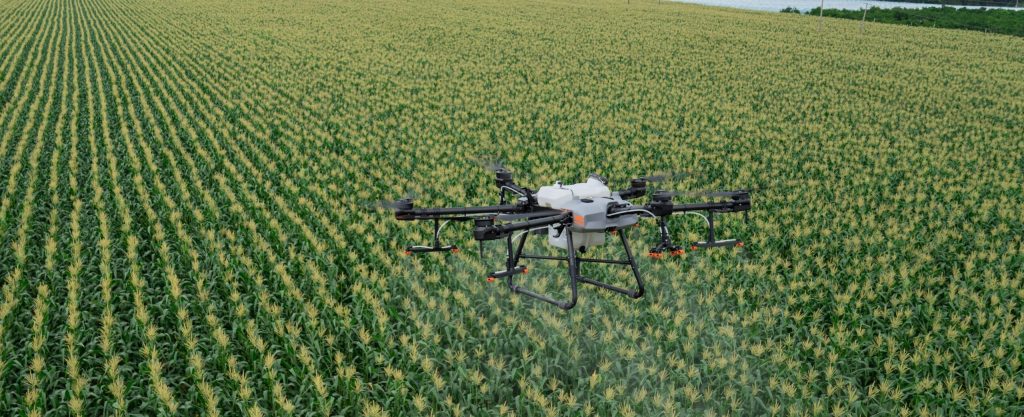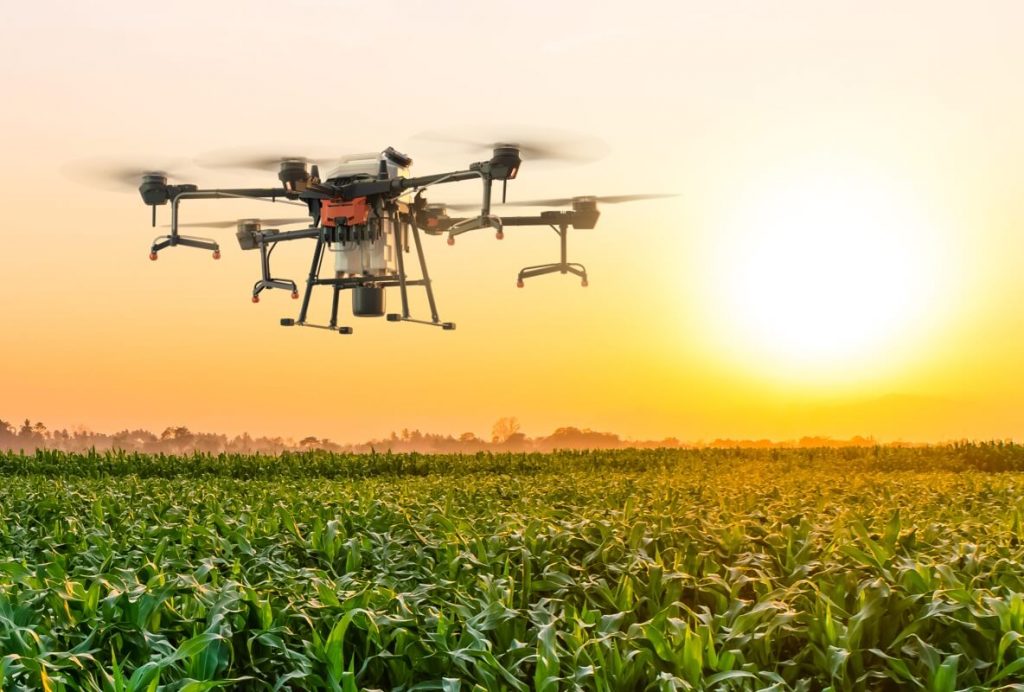FAQ:
As a rule of thumb, 2 gallons per acre (GPA) is commonly labeled as the carrier volume for most aerial applied products. The max realistic efficiencies at 2 GPA are listed below. These include landing and refill time.
- T10: 15 acres per hour
- T20: 25 acres per hour
- T30: 35 acres per hour
At a lower GPA, the efficiencies for each drone will increase slightly, at higher GPA the efficiency will decrease.
The Rest of the Story:
This is a question that our team gets at least once a day – because it’s a big one in determining if a spray drone is going to be a fit for your operation. It’s important to know how many drones you will need to cover the acres that need sprayed in the window of time you have to spray. Managing expectations for your new purchase is important to our team as well.
We sat down with Kit, our Agri Spray Drones repair technician, to learn more about how many acres per hour or how many acres per day an Agras T-10, T-20, or T-30 can effectively cover.
“Our website, www.agrispraydrones.com, breaks down how many acres can be sprayed per hour when you are spraying 2 gallons per acre, which is a common application volume for most products,” he says. “What I tell people, though, especially as we move away from the T-10s and T-20’s, most of our customers are operating the Agras T-30, is to expect to cover a range of 30 to 35 acres an hour. So in a 10 hour day, you should be able to cover between 300 and 350 acres.”
Kit adds that there are caveats to those numbers, however, and what he shares with customers daily is that drone spraying efficiency comes from planning as much or more as it does from the drone’s capabilities.
“When you first start out with your drone, you probably aren’t going to get those 30 to 35 acres right off the bat. Just like every technology, you have to gain experience and get good with it. That comes from practice. You also have to count the time it takes the drone to get to and from your spray zone in the field, the time it takes to fill up, and how quick you are at getting it back in the air – that ground time will add up.”
Planning where you will spray and logically mapping out paths for your drone to fly also increases efficiency in addition to learning where you are losing time on the ground.
“One of the things Taylor talks about in the monthly drone education and training clinic is knowing where the best spot in the field is to work from, what the best direction is to fly across the field, where the best spot is to position yourself – like is there a road I can travel down as my drone works across the field – all of these things make an impact and having those conversations and sharing that training is really where we provide more than sprayer drones,” Kit says. “These are things that if you know starting out, will help your efficiency and ability to cover the acres you need to cover.”
In addition to strategically planning your spray paths and positioning, there are down-time costs associated with using a slower pump or having issues with the transfer pump. Everything that isn’t the drone in the field doing its job comes with an efficiency cost, just like every other piece of equipment on the farm.
“The ground set-up trailer or platform used with the drone is completely customizable and can be as simple or elaborate as a you want it to be. That’s one of the areas that we spend some time covering in the monthly training and education clinic. It’s really important that operator’s have a set-up that works well for their field situation,” Kit says.
Increasing the gallons per acre being sprayed is also a common issue Kit finds when fielding time-related questions, “Three gallons per acre take a little longer than two gallons per acre, so every time you have to adjust that volume, you’re adjusting your coverage time,” he says.
Like all technologies, ag sprayer drone technology continues to improve, that’s why our team prides itself on serving as an education and knowledge hub resource for anyone interested in incorporating a sprayer drone into their operation or beginning a custom application business. We encourage and look forward to answering your questions and are always just a phone call or email away.
To learn more, give us a call or reach out: https://wp.agrispraydrones.com/services/

